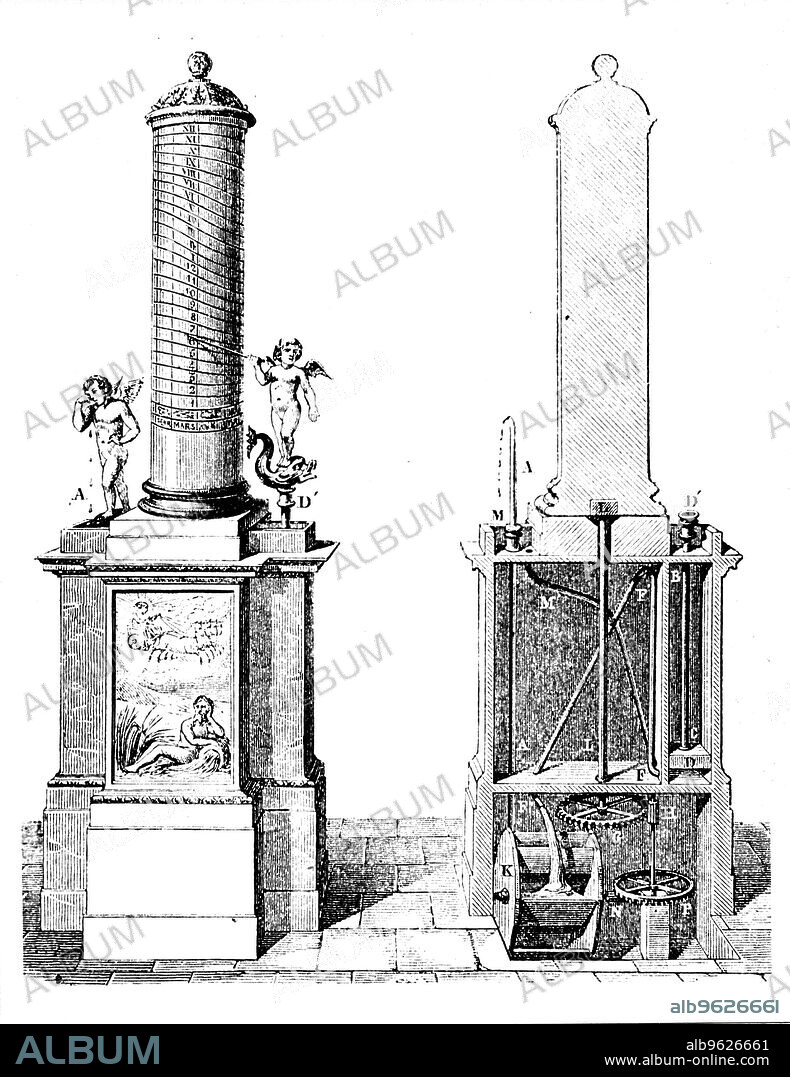alb9626661
Reconstruction of a clepsydra (water clock), invented by Ctesibius of Alexandria, c270 BC (1857). Artist: Unknown

|
Ajouter à une autre Lightbox |
|
Ajouter à une autre Lightbox |



Avez-vous déjà un compte? S'identifier
Vous n'avez pas de compte ? S'inscrire
Acheter cette image

Titre:
Reconstruction of a clepsydra (water clock), invented by Ctesibius of Alexandria, c270 BC (1857). Artist: Unknown
Légende:
Voir la traduction automatique
Reconstruction of a clepsydra (water clock), invented by Ctesibius of Alexandria, c270 BC (1857). Ctesibius (fl270 BC) was an inventor and mathematician who initiated a tradition of great engineers in ancient Alexandria. None of his writings have survived, and his inventions are only known about from references to them made by others. This clock worked by water dripping at a constant rate and raising a float with a pointer. It was only superseded in terms of the accuracy of its timekeeping in the 17th century when Christiaan Huyghens showed how the pendulum could be applied to clocks
Technique/matériel:
engraving
Crédit:
Album / Ann Ronan Picture Library/Heritage-Images
Autorisations:
Modèle: Non - Propriété: Non
Questions sur les droits?
Questions sur les droits?
Taille de l'image:
2841 x 3684 px | 29.9 MB
Taille d'impression:
24.1 x 31.2 cm | 9.5 x 12.3 in (300 dpi)
Mots clés:
 Pinterest
Pinterest Twitter
Twitter Facebook
Facebook Copier le lien
Copier le lien Email
Email
